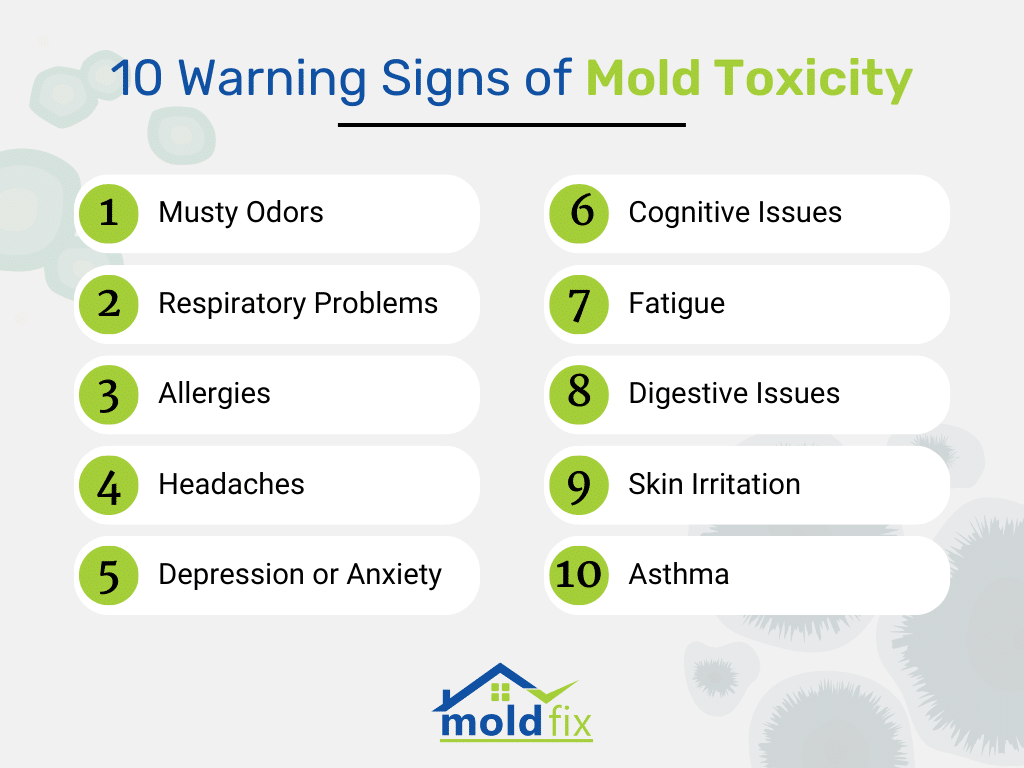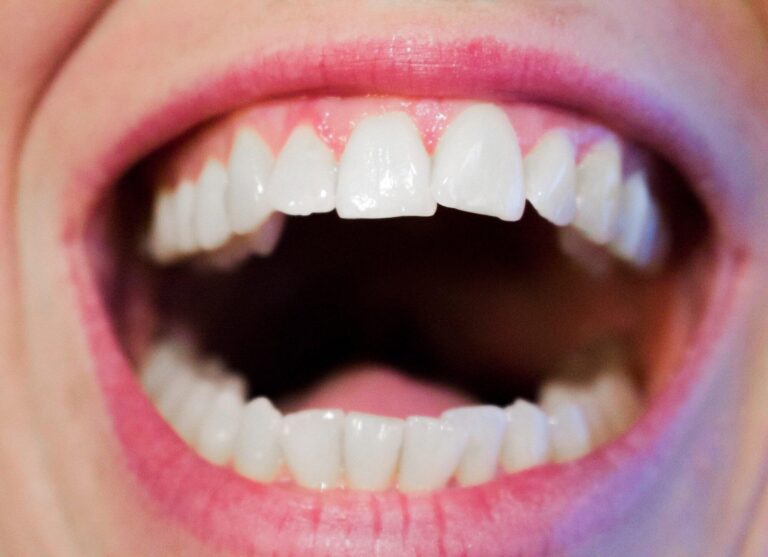10 Warning Signs of Mold Toxicity: Recognizing the Symptoms
Mold toxicity, also known as mold illness or mold-related illness, occurs when exposure to mold spores triggers an immune response in the body, leading to a range of symptoms. Mold toxicity can affect individuals differently, and the severity of symptoms can vary depending on factors such as the type of mold, duration of exposure, and individual sensitivity. Recognizing the warning signs of mold toxicity is crucial for early detection and intervention. Here are 10 common symptoms to be aware of:
Respiratory Issues
Respiratory symptoms are often the most noticeable signs of mold toxicity. These may include:
- Persistent coughing
- Wheezing or difficulty breathing
- Shortness of breath
- Chest tightness or discomfort
- Sinus congestion or nasal congestion
- Sore throat
Allergic Reactions
Mold exposure can trigger allergic reactions in some individuals, leading to symptoms such as:
- Sneezing
- Runny or stuffy nose
- Itchy or watery eyes
- Skin rashes or hives
- Itchy throat or ears
- Redness or irritation of the skin
Fatigue and Weakness
Exposure to mold toxins can also cause fatigue and weakness, which may persist even after adequate rest. Individuals with mold toxicity may experience:
- Persistent fatigue
- Weakness or lethargy
- Difficulty concentrating or brain fog
- Feeling drained or exhausted despite rest
Headaches
Headaches are a common symptom of mold toxicity and may vary in intensity and duration. Some individuals may experience:
- Frequent headaches
- Migraine-like headaches
- Tension headaches
- Pressure or pain in the head or temples
Cognitive Impairment
Mold toxicity can affect cognitive function and mental clarity, leading to symptoms such as:
- Difficulty focusing or concentrating
- Memory problems or forgetfulness
- Confusion or disorientation
- Slowed thinking or processing speed
Digestive Issues
Some individuals with mold toxicity may experience gastrointestinal symptoms, including:
- Nausea or vomiting
- Abdominal pain or cramping
- Diarrhea or constipation
- Bloating or gas
- Loss of appetite
Joint and Muscle Pain
Mold toxicity can cause inflammation in the body, leading to joint and muscle pain. Common symptoms may include:
- Joint pain or stiffness
- Muscle aches or soreness
- Muscle weakness
- Swelling or inflammation in the joints
Sensitivity to Light and Sound
Sensitivity to light and sound is a less common but still significant symptom of mold toxicity. Some individuals may experience:
- Sensitivity to bright lights or loud noises
- Discomfort or pain when exposed to light or sound
- Worsening of symptoms in environments with bright lights or loud noises
Mood Changes
Mold toxicit’y can impact mood and emotional well-being, leading to symptoms such as:
- Irritability or mood swings
- Anxiety or nervousness
- Depression or feelings of sadness
- Emotional instability
- Difficulty coping with stress
Increased Susceptibility to Infections
Exposure to mold toxins can weaken the immune system, making individuals more susceptible to infections. Some may experience:
- Frequent colds or respiratory infections
- Recurrent sinus infections
- Persistent fungal infections of the skin or nails
- Slow healing of wounds or infections
Conclusion
Recognizing the warning signs of mold toxicity is crucial for early detection and intervention. If you or someone you know is experiencing any of the symptoms mentioned above, especially if they occur in combination or persist over time, it’s essential to seek medical attention and consider the possibility of mold exposure. By addressing mold toxicity promptly, individuals can take steps to minimize further exposure, alleviate symptoms, and improve their overall health and well-being.
FAQs
What is mold toxicity?
Mold toxicit’y, also known as mold illness or mold-related illness, occurs when exposure to mold spores triggers an immune response in the body, leading to a range of symptoms. These symptoms can affect various systems of the body and vary in severity depending on factors such as the type of mold, duration of exposure, and individual sensitivity.
How does mold exposure occur?
Mold exposure can occur through inhalation of mold spores, ingestion of contaminated food or water, or direct contact with mold-infested surfaces. Mold thrives in damp and humid environments, such as bathrooms, basements, and areas affected by water damage.
What are the common symptoms of mold toxicity?
Common symptoms of mold toxicit’y include respiratory issues (such as coughing, wheezing, and sinus congestion), allergic reactions (such as sneezing, runny nose, and skin rashes), fatigue and weakness, headaches, cognitive impairment, digestive issues, joint and muscle pain, sensitivity to light and sound, mood changes, and increased susceptibility to infections.
How is mold toxicity diagnosed?
Diagnosing mold toxicit’y can be challenging, as symptoms may overlap with other health conditions. Healthcare providers may conduct a thorough medical history and physical examination, as well as order tests such as blood tests, urine tests, allergy testing, and mold exposure testing to assess the presence of mold toxins in the body.
What is the treatment for mold toxicit’y?
Treatment for mold toxicit’y focuses on reducing exposure to mold, alleviating symptoms, and supporting overall health and well-being. This may involve removing mold from the environment, using air purifiers or dehumidifiers, taking medications to manage symptoms (such as antihistamines or nasal corticosteroids), and adopting a healthy lifestyle (including proper nutrition, hydration, and stress management).
Can mold toxicity be prevented?
Preventing mold toxicity involves taking steps to minimize exposure to mold and create a healthy indoor environment. This includes fixing leaks and water damage promptly, maintaining proper ventilation and humidity levels, cleaning and drying damp or wet areas promptly, using mold-resistant materials, and regularly inspecting and cleaning HVAC systems.
When should I see a doctor for mold toxicity?
If you experience persistent or severe symptoms of mold toxicity, especially if they occur in combination or worsen over time, it’s essential to seek medical attention. A healthcare provider can evaluate your symptoms, perform appropriate testing, and recommend treatment options to address mold toxicity and improve your overall health and well-being.







